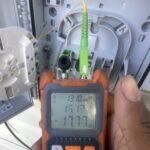In the realm of modern manufacturing, precision and efficiency are paramount. One technology that has revolutionized the way intricate parts are produced is Electrical Discharge Machining (EDM). At the heart of this process lies the edm tapping electrode, a versatile tool that plays a pivotal role in mould processing. In this article, we delve into the world of EDM tapping electrodes and explore their applications in the intricate realm of mold processing.
Understanding EDM Tapping Electrodes
Electrical Discharge Machining, often referred to as EDM, is a cutting-edge manufacturing process that employs controlled sparks to erode material from workpieces. Central to this process are electrodes, which serve as conductive tools that guide the electrical discharges. Tapping electrodes, in particular, are designed for precision and versatility, enabling manufacturers to create complex and intricate features on molds and other workpieces.
The Role of EDM in Mould Processing
Mold processing demands a high degree of precision and intricate detailing, making EDM an ideal choice. Unlike traditional machining methods, EDM doesn’t involve direct contact between the electrode and the workpiece. Instead, it relies on controlled electrical discharges that meticulously erode the material, ensuring minimal heat transfer and negligible mechanical stress. This unique process results in superior surface finish, intricate designs, and tight tolerances that are often unattainable through other means.
Importance of Tapping Electrodes in EDM
Tapping electrodes add an extra layer of precision and versatility to the EDM process. These electrodes are specifically designed for creating threaded holes, such as those required in molds for screws or other fasteners. The ability to create accurate and consistent threads using EDM tapping electrodes eliminates the need for secondary operations, reducing production time and costs.
Types of Tapping Electrodes
Tapping electrodes come in various forms to accommodate different requirements. Solid tapping electrodes are the most common and are used for standard applications. Tubular electrodes are preferred when flushing is necessary, allowing the dielectric fluid to reach the machining area effectively. Composite electrodes, on the other hand, combine different materials to enhance durability and performance, ensuring a longer lifespan.
Design Considerations for Tapping Electrodes
Designing tapping electrodes involves careful consideration of factors such as thread pitch, hole diameter, and electrode material. The geometry of the electrode must align precisely with the desired thread specifications. Additionally, the electrode design should facilitate efficient chip evacuation to prevent clogging and ensure continuous machining.
Electrode Material Selection
The choice of electrode material significantly impacts EDM performance. Common materials for tapping electrodes include copper, graphite, and tungsten. Copper electrodes offer excellent conductivity and are suitable for general applications, while graphite electrodes are preferred for their superior wear resistance. Tungsten electrodes, being harder, are ideal for machining harder workpiece materials.
Benefits of EDM Tapping Electrodes in Mould Processing
The integration of tapping electrodes into the EDM process brings forth a multitude of benefits. The precision achievable with tapping electrodes ensures consistent and accurate threads, eliminating the risk of misalignment or incomplete threading. Moreover, the non-contact nature of EDM prevents workpiece distortion, allowing for the creation of intricate threads in delicate moulds without compromising structural integrity.
Applications of EDM Tapping Electrodes
The applications of EDM tapping electrodes span various industries. In the automotive sector, molds for engine components require precisely threaded holes for fasteners. The aerospace industry relies on tapping electrodes to produce intricate molds for turbine blades and other critical parts. Even the electronics industry benefits from EDM tapping electrodes, creating molds for intricate components in devices.
Challenges and Solutions
While EDM tapping electrodes offer numerous advantages, challenges can arise. Electrode wear is a common concern, particularly when machining hard materials. To mitigate this, electrode materials with higher wear resistance can be employed. Additionally, proper electrode flushing and efficient dielectric fluid circulation help manage heat buildup and maintain machining stability.
Future Trends in EDM and Tapping Electrodes
The landscape of manufacturing is ever-evolving, and EDM technology is no exception. As materials and processes continue to advance, EDM tapping electrodes will likely undergo enhancements to accommodate higher precision, faster machining speeds, and even more diverse applications. Integration with digital technologies such as AI and automation may further streamline the mold processing workflow.
Conclusion
In the world of modern manufacturing, where precision and efficiency are paramount, Electrical Discharge Machining with tapping electrodes shines as a beacon of innovation. The marriage of EDM technology with tapping electrodes has revolutionized the creation of intricate threads in mold processing, ensuring accuracy, efficiency, and versatility. As industries continue to demand intricate designs and superior surface finishes, the applications of EDM tapping electrodes will only expand, driving the future of manufacturing toward unprecedented heights.
FAQs
What is Electrical Discharge Machining (EDM)?
EDM is a manufacturing process that utilizes controlled electrical discharges to erode material from workpieces, resulting in intricate shapes and precise features.
What role do tapping electrodes play in EDM?
Tapping electrodes guide electrical discharges in the creation of threaded holes in workpieces, offering precision and versatility.
Why is EDM preferred in mold processing?
EDM provides a superior surface finish, intricate detailing, and tight tolerances, making it ideal for mould processing requiring precision.
What materials are used for tapping electrodes?
Tapping electrodes are often made from materials like copper, graphite, and tungsten, each offering specific advantages based on application.
How do tapping electrodes contribute to efficient mould processing?
Tapping electrodes eliminate the need for secondary operations, reducing production time and costs by creating accurate threads directly in the EDM process.





